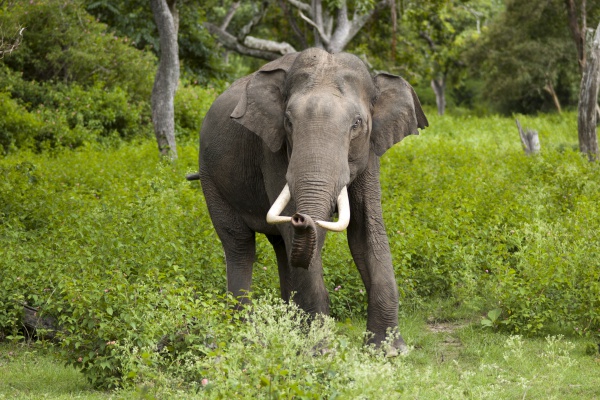Facts About Asian elephant
The Asian elephant, also known as the Asiatic elephant, is the sole surviving species in the genus *Elephas*. These majestic creatures roam the Indian subcontinent and Southeast Asia and are recognized in three subspecies. As Asia's largest land mammal, the Asian elephant has been listed as Endangered on the IUCN Red List since 1986. Their population is declining due to habitat loss, degradation, fragmentation, and poaching.
Remarkably, the genus *Elephas* originated in Sub-Saharan Africa before expanding its range into Asia. Evidence of Asian elephants being kept in captivity dates back to the 3rd millennium BC, within the Indus Valley Civilization. The three recognized subspecies are *Elephas maximus indicus*, *Elephas maximus maximus*, and *Elephas maximus sumatranus*. Some proposed extinct subspecies have been subsumed under the Indian elephant.
Asian elephants are smaller than their African bush elephant cousins and exhibit distinct features like their unique trunk, tusks, and skin. They are highly intelligent, displaying complex social behaviors and impressive cognitive abilities. As herbivores, they consume a variety of plants daily and require large territories to thrive.
One significant threat to Asian elephants is human-elephant conflict, driven by habitat loss, poaching for ivory and skin, and illegal trade. Conservation efforts focus on preserving their habitats, raising public awareness, and enforcing regulations such as those under CITES.
In captivity, Asian elephants face numerous challenges, including stress, obesity, and low reproductive success. They tend to have higher infant mortality rates and shorter lifespans compared to their wild counterparts. Captive breeding programs in North America and Europe have struggled to maintain self-sustaining populations.
To ensure the survival of Asian elephants, it is crucial to address human-elephant conflicts, curb poaching and illegal trade, and improve conditions for captive elephants. Protecting their natural habitats, spreading awareness, and enforcing strict regulations are essential steps in safeguarding the future of these incredible animals.

 Laos
Laos